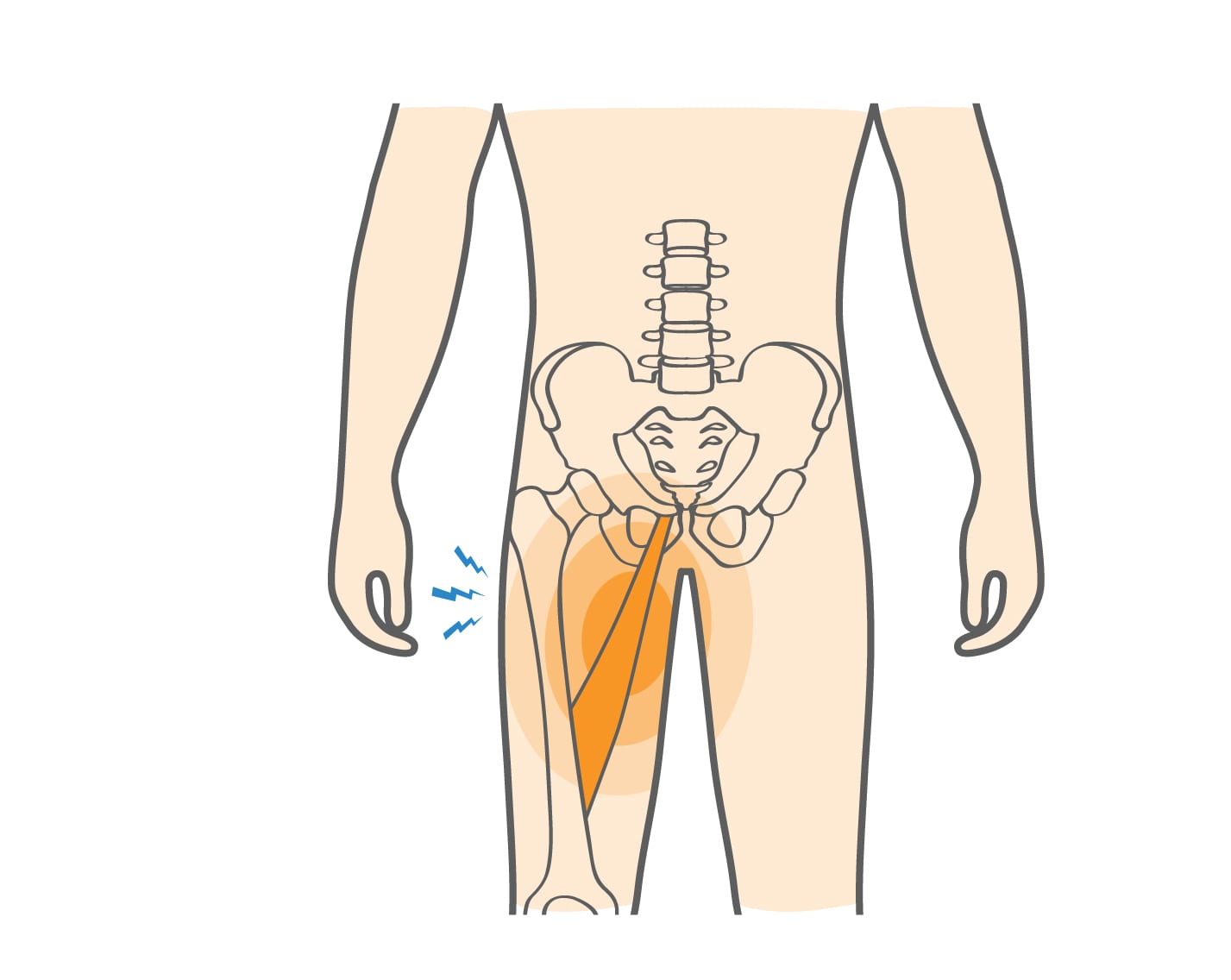The most common type of groin injury is a groin strain, or pulled groin. This injury results when muscles in the inside of your thigh that connect to the pelvic bone, called abductor muscles, become overstretched or torn. A common injury among athletes, groin strains can be painful, and depending on how severe they are, may take several weeks to heal.
Groin Pull Causes, Symptoms & Treatment Options
The most common type of groin muscle injury is a groin strain or pulled groin. This injury results when muscles inside your thigh that connect to the pelvic bone, called adductor muscles, become overstretched or torn. A common injury among athletes is an adductor strain, which can be painful and may take several weeks to heal, depending on its severity.
Overview
Overview

What causes Groin Pull?
Athletes who frequently stop, start, and change direction while running or jumping are at high risk for this type of injury. These movements can push the adductor muscles beyond their limit, resulting in an adductor strain. Direct trauma to the muscle can also cause a similar injury.
Groin muscle injuries, are particularly common in soccer and hockey. Around 10% of all injuries in these sports are groin-related.
Overall, groin strain is common in these sports:
• Soccer
• Hockey
• Football
• Basketball
• Ice skating
• Wrestling
• Track and Field sports
• Gymnastics
Symptoms
The symptoms of a groin muscle injury vary with severity. Common symptoms may include:
- Sharp inner thigh pain or pain in the groin and thigh
- A popping or snapping sensation at the time of injury
- Tenderness or tightness in the groin area
- Swelling or bruising
- Reduced mobility or stiffness
When to see a doctor
Usually, an adductor strain will improve with time and rest. However, if you think you strained your groin and have symptoms that persist beyond one to two weeks, see a doctor to rule out other injuries and ensure you get the proper treatment. During your visit, your doctor will ask about your injury, the pain you are experiencing, and whether you have had similar injuries. A physical examination will look for signs of injury, such as swelling and bruising, and the doctor may ask you to stretch your leg to see your range of movement.
After the physical examination, your doctor may recommend an X-ray or magnetic resonance imaging (MRI) test. These imaging tests provide detailed pictures of the affected area and rule out other more serious causes of your pain.
Non-operative treatment
Groin strains generally heal on their own. However there are steps you can take to reduce pain and swelling. Your doctor may recommend a number of options including:
• Rest
• Ice
• Compression
• Elevation
• Over-the-counter medications, such as tylenol or a nonsteroidal anti-inflammatory (NSAID) medication like ibuprofen
After your pain and swelling have subsided, your doctor may also recommend stretching and strengthening exercises to extend your range of motion and help you have a quicker recovery.
Try these exercises to help address your condition:
Below is a PDF of the Exercise Program
Surgical Treatment
Groin strains are almost always treated non-surgically. Surgery for this type of injury is rarely recommended.
Recovery
Recovery time after a groin strain depends upon the severity of the strain and how much damage was done to the abductor muscle. Your doctor can guide you on when you can return to your normal level of physical activity. Give yourself the necessary time to fully heal from your injury before you return to sports. Pushing yourself too soon can lead to re-injury and an even longer recovery time.
GET BACK TO WHAT YOU LOVE. FASTER
Sources
https://orthoinfo.aaos.org/en/diseases–conditions/muscle-strains-in-the-thigh/
https://www.healthline.com/health/groin-strain
https://www.webmd.com/fitness-exercise/groin-pull#1
https://www.ncbi.nlm.nih.gov/pmc/articles/PMC3445110/
http://www.sportsinjuryclinic.net/sport-injuries/hip-groin-pain/groin-strain
Frequently Asked Questions
How do you heal a pulled groin fast?
- Rest 1–2 weeks – Avoid activities that cause pain.
- Ice 10–20 mins every few hours to reduce swelling.
- Skip intense exercise until pain-free.
What activities trigger groin pain?
Common in sports with sudden cuts/sprints (soccer, hockey, football). Pain can strike immediately or build gradually.
What causes groin injuries?
- Sports collisions/awkward motions (acute tears).
- Repetitive stress ("microtraumas" over time).
How can you prevent a groin pull?
To prevent groin strains, warm up properly before physical activity, focus on strengthening and stretching the inner thigh muscles, and avoid sudden, forceful movements without adequate preparation.

